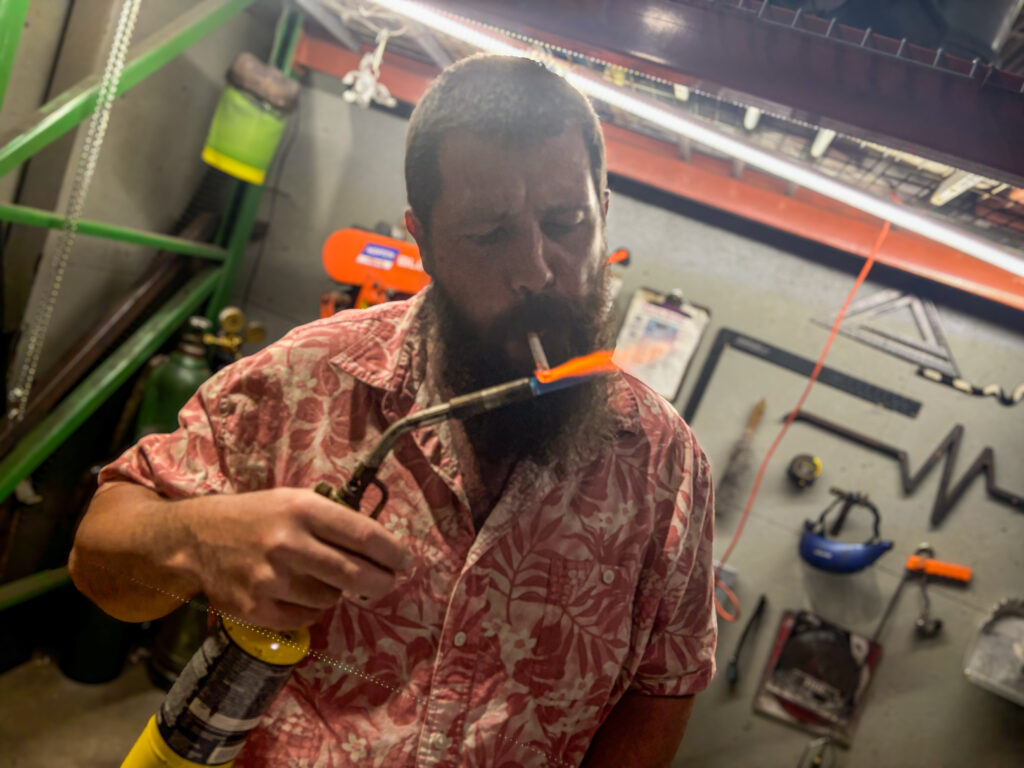In the Heat: Jamie Payne on Steel, Community, and the Ripples We Leave
It’s surprisingly cool inside the cavernous Blue Hell Studio, an industrial cathedral tucked away in Cincinnati and home to the city’s blacksmith’s guild, a handful of glassblowers, fire-breathers, and the inevitable cluster of half-finished sculptures that loom like quiet witnesses. Amidst these shadows, Jamie Payne (’08) stands in his metal-clad studio, a space that stretches twenty feet high and hums with possibility. Wrapped sculptures wait patiently in the rafters; tools for “special occasions” rest like sleeping giants. Owner and fabricator of Fire Lab. On his worktable, a steel sheet lies marked with chalk outlines of hands—soon to be cut out for a new commission. Nearby, an eight-foot welded frame for an open-fire cooking rig waits for its next transformation.
Payne lights an American Spirit cigarette with a handheld torch—an art school party trick that still feels rebellious years later. In his Hawaiian shirt, epic beard and tousled hair, he looks like a bohemian half-Viking who wandered into a metal shop and never left. But even before the big studio and solid line of clients, Payne was always making. “The earliest sculpture I ever did? I carved soap bars into tiki heads at age 6,” he laughs. “My mom actually saved a few. I loved the way the water softened them—I’d use a nail file to make little tiki masks.”
Always A Sculptor
Material has always called to him—whether in the quiet pews of church as a boy, running his fingers over the punctured feet of a pieta, or in the basement ping-pong table studio he overtook as a teenager. “I had to learn how to make things like that,” he says. At Elder High School, Mr. Beaman encouraged him to wander and experiment. Later at the Art Academy, he refined those early impulses into a sculpture major: mold-making, casting, and the tactile joy of seeing an idea become an object.
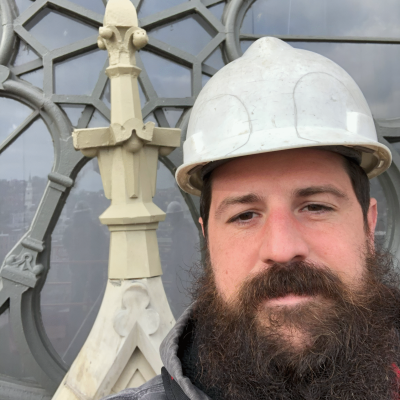
After graduating in 2008, the first class to study all four years at our current location in Over the Rhine, Payne worked at Rookwood Pottery, rising to Master Mold Maker and Production Engineer. There, he met a Venezuelan artisan who introduced him to the communal magic of pit cooking rigs back home. They joined forces, using seed money from Rookwood to build a cooking setup for a sprawling food event. The success of that project snowballed, leading to commissions for Aperture in walnut hills, Italian bistro Carmagnola in Hamilton Ohio, Mom ‘n ‘Em, and other local spots, where Payne’s sculptural sensibility merged with culinary theater. Fire Lab, the custom fabrication and sculpture business he runs today, grew out of these early experiments—out of saying yes before he even knew how.
Measuring Success
“Success to me is two things,” he says. “Financial stability, and the constant push to improve your craft. I love when work has a life after me—when a rig or sculpture lives on and people interact with it. That’s exciting now.”
Running Fire Lab full-time for eight years, Payne supports his family entirely through this swirling mix of art and industry. “It’s a hustle. It’s hard. And I question myself all the time. Then a little gem happens—a breakthrough or a moment—and I remember: Oh yeah, this is what I’m supposed to be doing.”
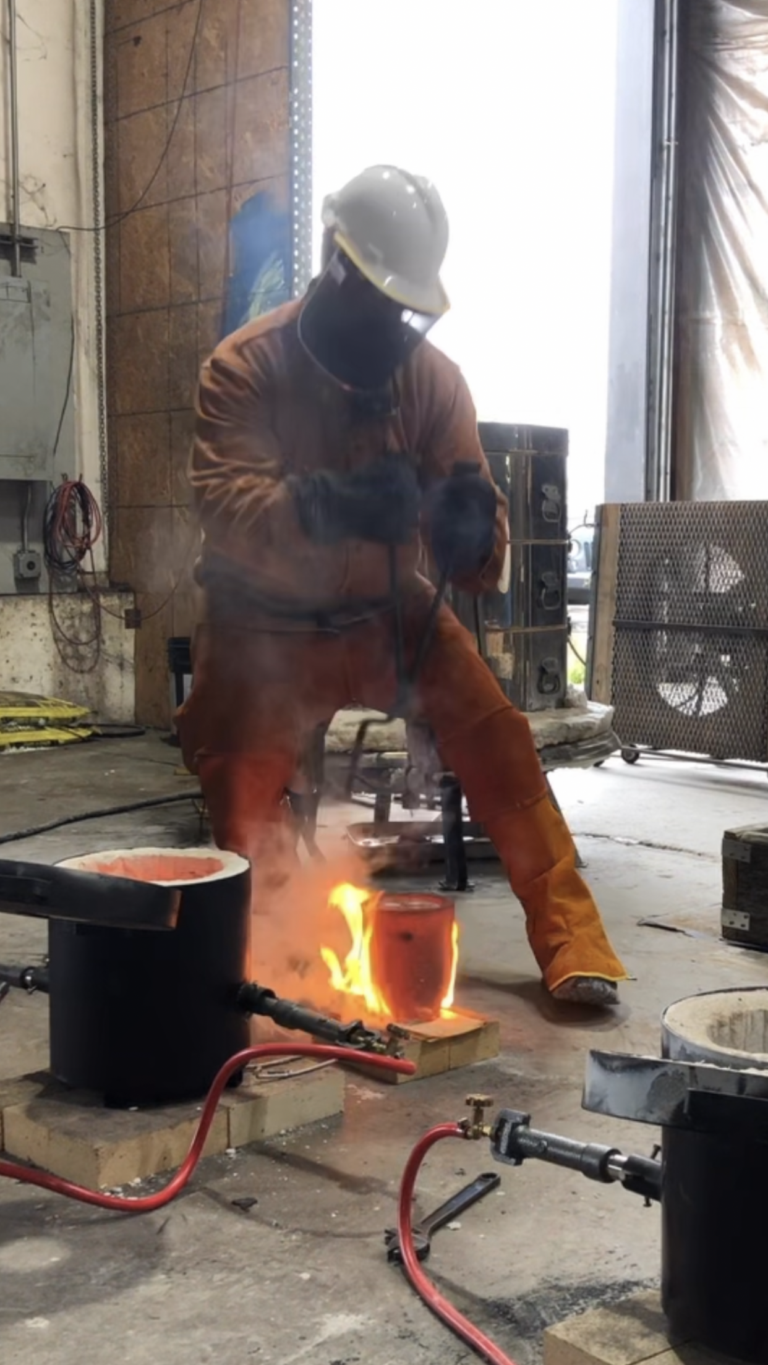
Sculptor or Fabricator?
He calls himself a sculptor before an artist, which makes sense given his reverence for process over pedestal. “Grad school left a bad taste for me,” he admits. “I sometimes wonder what my life would have been if I’d invested that tuition money straight into my business.” He pauses, looking around the studio. “The white gallery space—it was never satisfying. My undergrad thesis was basically a critique of the perfect object and the commodification of art. For me, there’s no joy in being a lone genius; it’s all about the community, the collaborations.”
Some of his most formative experiences weren’t in classrooms but in Friday Night Blows—epic glassblowing jams where everyone pushed the limits of material and imagination together. “River City Works, most sculpture classes—those were communal. That’s the good stuff. That’s why I love fabricating for artists who don’t have these techniques, or building open hearths. It’s always about the people.”
Beyond his own commissions, Payne and Fire Lab are deeply enmeshed in some of the city’s most ambitious and culturally significant projects. As part of the creative team bringing artist Michael Coppage’s 12 Commandments series to life, Payne completed life castings of Coppage himself and shaped the waxes for the lost-wax bronze process. The first three hyper-realistic sculptures, visceral commentaries on police brutality, debuted at Art Basel in Miami and have since traveled nationally. Nine more figures are on the way, each one a stark, unflinching presence.
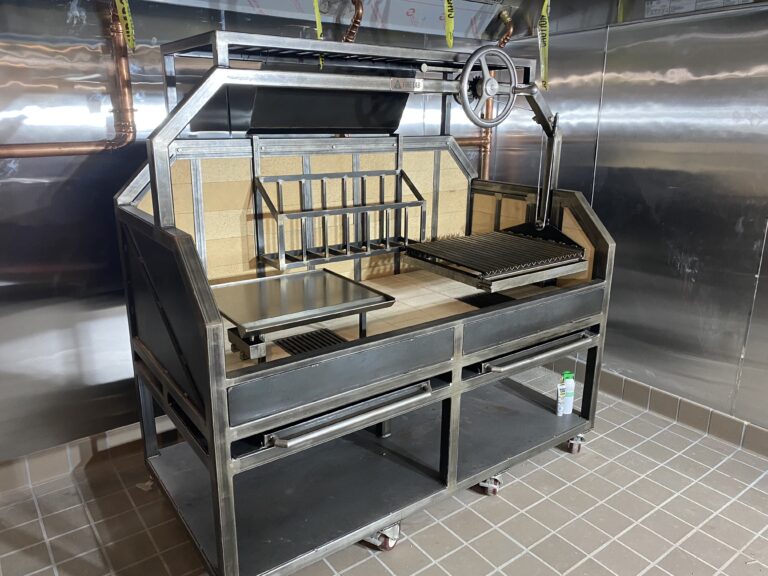
Looking forward and back
Fire Lab led all the mold making and casting to restore sixteen 140-year-old sandstone finials atop Samuel Hannaford’s Cincinnati Music Hall. Funded by the Friends of Music Hall and the Preservation Society. The project won a Cincinnati Preservation Association Award—a testament to Payne’s rare blend of artistic sensibility and technical rigor.
At the funeral for Gary Gaffney, a beloved Art Academy faculty member, Payne had a revelation: “You aren’t just making art, you’re making impacts. It’s the ripples that matter in this life.” He gestures to a fellow alum’s studio across the hall—another reminder of shared lineage and ongoing dialogue.
His advice to young artists echoes this ethos: “Develop your skills. Embrace that it will be a worthwhile struggle. Become your own biggest fan.”
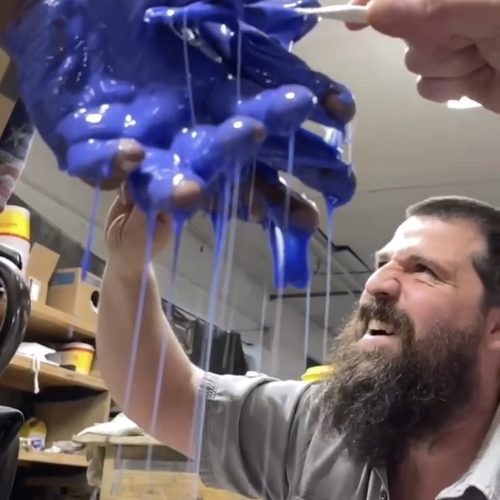
Advice for a new generation
Despite the hustle—and the second-guessing that comes with it—Payne remains steadfast in his faith that making is the answer to almost everything. “I can see my whole life ahead of me,” he says, eyes bright. “My whole soul is pointing there. You keep going. You keep making art your whole life. You’ll never be immune to doubt, but making stuff sure stops it from taking over.”
If success is a path rather than a place, Jamie Payne is very much on it—hammer in hand, sparks flying, torch at the ready.
If you know an alumni we should interview reach out: marketing@artacademy.edu
